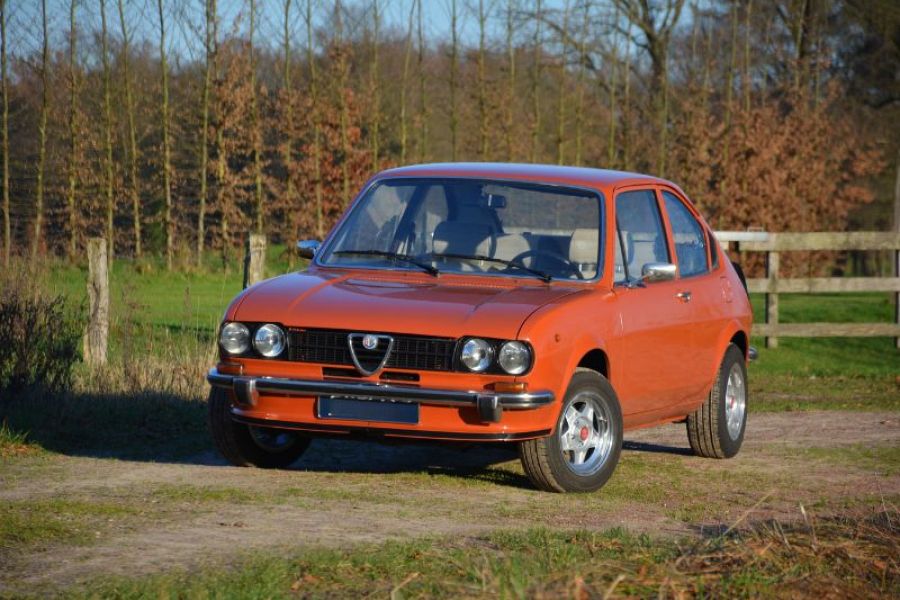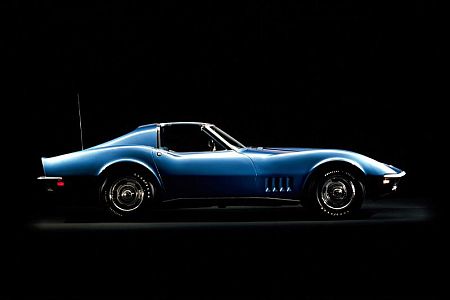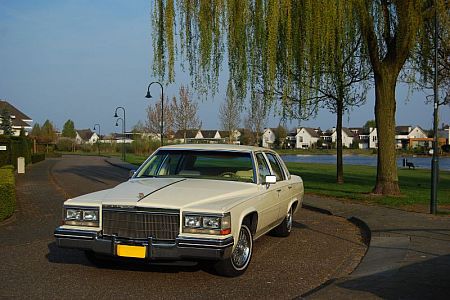Alfa Romeo Alfasud
It is still the target of ridicule. Everyone associates the Alfa Romeo Alfasud (1972-1984) with corrosion problems, while the many qualities of the concept are thus snowed under. A mortal sin, but fortunately, in recent years, recognition of this gossamer front-wheel drive with its roaring boxer engine has been growing. Those who give it its second chance are guaranteed to enjoy it.
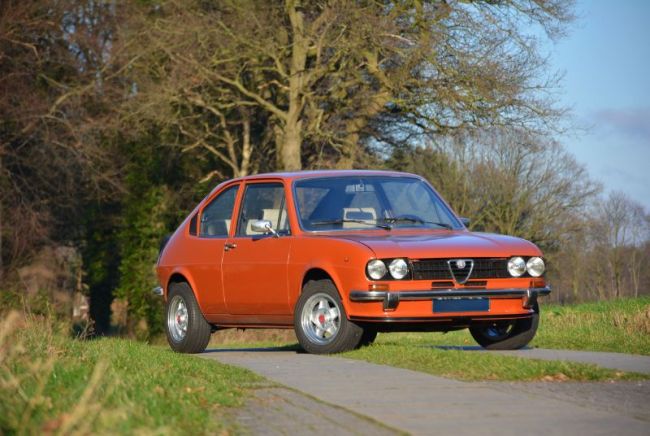
Corrosion problems
Alfa Romeo dealers from the 1970s will still shudder today when the Sud name is dropped. It made the statement 'rust already in the brochure' legendary. Garages had to tame countless indignant customers and at least as many desperately trying to convince people that 'this model year rust prevention is really under control after all'.
The factory did indeed take action to this end, but it did not always turn out happily. How could a renowned brand, which was hardly inferior to the German mentality in terms of quality, go so wrong?
The anecdotes about the Alfasud abound, but we will keep it brief, because there is no point in being the umpteenth to focus all attention on its shortcomings. Let's preface by saying that almost all car manufacturers struggled with corrosion misery at the time, only Alfa's first front-wheel-drive car topped the list due to adverse conditions.

Production in Naples
The seeds of misery school in the fact that, in order to pocket hefty subsidies from the Italian government, production was made in poor southern Italy, plagued by high unemployment rates. Here, they built a new factory on the former Alfa Romeo Avio site near Naples, turning the airport into a test track.
Only some of the farmers and unemployed could be employed. Totally inexperienced with the advanced manufacturing methods and also unmotivated, they went on strike at the slightest setback. The story goes that during the Sud life cycle, production stalled more than 700 times.
Declining interest
When the tyres did turn, mistakes and carelessness accumulated. Parts were forgotten and sometimes, 'due to circumstances', people did not feel like properly priming the body before it received its final coat of paint. Alfa Romeo could not keep up with demand for the Sud at first, interest in the conceptually interesting car soon subsided and the planned numbers were nowhere near reached.
Only in the later years did they get some grip on the excessive rusting that made the Alfasud so notorious. However, public interest remained moderate, although total sales still ended up at over 700,000.
The thoughtful overall package of the Alfasud
Apart from its quality, the overall package of the Alfasud, the car that was to provide volume at Alfa Romeo, was well thought-out and progressive. To gain space in the interior, the designers provided it with front-wheel drive, with a nicely flat boxer engine as power source, which allowed for a low nose and thus nice aerodynamics.
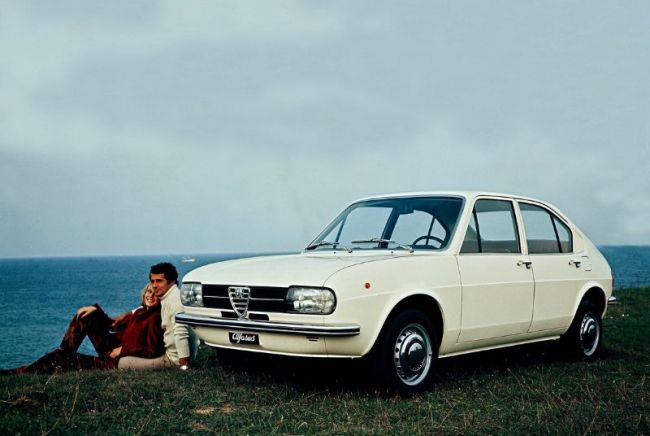
Four disc brakes and a tank placed under the rear seat were essential safety elements. The press praised the spacious interior including the height-adjustable steering wheel, the comfort offering and the excellent road handling. Criticisms concerned the somewhat sparsely finished cabin and the limited pulling power 'at the bottom' of the 1.2 engine. To both, Alfa Romeo would provide an answer not much later.
Alfa Romeo Alfasud ti
The first variant to present itself in 1973 was the sportily dressed ti, with two instead of four doors and some spoiler work. It was blessed with power brakes, more engine power and, initially optional, a five-speed gearbox.
Giardinetta
With the L (Lusso), they upgraded the regular Alfasud the following year and in 1975 the Giardinetta was born, a three-door station wagon with the possibility of creating a completely flat load floor up to the front seats. However, this type did not gain very much popularity.
Step by step, Alfa Romeo made improvements to the range, with the five-speed gearbox advancing. Engine variants of 1.3 and 1.5 litres made their appearance in 1977 and 1978 respectively, and in the meantime the range began to expand nicely.
Nuova
At the dawn of the new decade, the Sud surprised the public with a drastic facelift, enough to be pinned on the 'Nuova' label. The many heavy body accents, including the henceforth plastic bumpers, along with the totally revamped interior stood out the most.
The call for a tailgate was not answered by Alfa Romeo until 1981; initially only on the two-door and only later on the four-door. It made the Giardinetta more or less redundant and it disappeared.
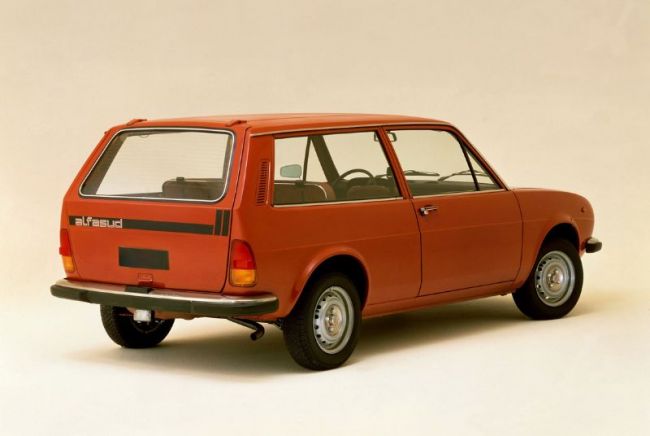
Alfa Romeo Alfasud Sprint 1.5 qv
That the years were beginning to count did not prevent the brand from releasing the racy Ti 1.5 Quadrifoglio Verde. With the arrival of the Alfa 33 in 1983, the big clearance started and in the following year the last Suds rolled out of the factory.
Availability, maintenance and repairs
It is hard to find a good Alfasud these days. Still, here and there you might find one, especially if you don't shy away from (digitally) scouring the southern European market. Naturally, the best examples have survived and when you pamper one of these with a thorough anti-rust treatment and sleep inside, you can enjoy it for a long time, not least on tarmac.
The growling boxer engine that hangs so wonderfully on the throttle and loves to climb in revs, the low centre of gravity, the formidable handling and sharp steering, they make the Sud worthy of the Alfa Romeo badge.
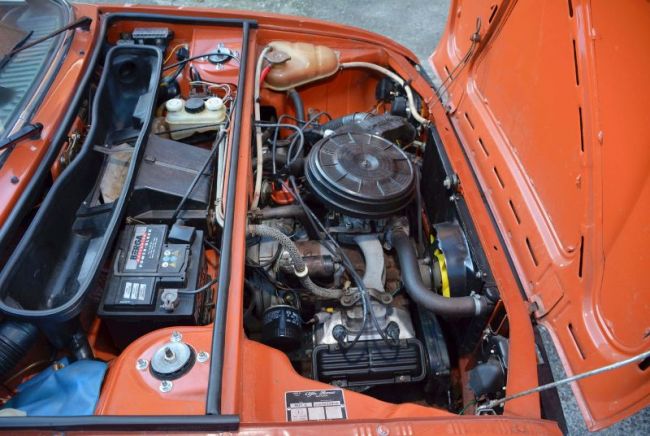
Technically, the car is definitely not overly sensitive and maintenance remains neatly contained in terms of frequency and cost. For the tinkerer, the whole thing doesn't actually present any insurmountable difficulties. So... try something different, with tons of character and a nice naughty touch.


